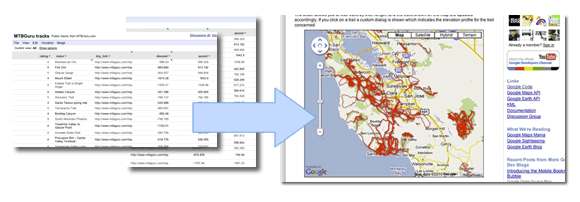| Google Fusion Tables API |
| Written by Kay Ewbank | |||
| Thursday, 28 June 2012 | |||
|
Google has announced the public availability of its new Fusion Tables API and at the same has begun a six-month deprecation period for the SQL API. So developers need to start to move over to Fusion Tables soon. Fusion Tables is a data visualization web application that you can use to work with large data tables to extract meaningful information. Fusion Tables lets you store, share, query, and visualize data tables. It has a REST API that you can use to manage tables, and a query facility that can be used to manage data rows (insert/update/delete), and query the table for all rows that match spatial or data conditions. The results of queries can be CSV or JSON, or you can use them as the source for apps based on the Google Maps API or Google Chart Tools. Data that can be mapped in Fusion Tables can also be a layer on a Google Map:
and it can also be a data source for Google Chart Tools:
Until now, developers have worked with Fusion Tables using Google’s SQL API. This has now been deprecated (June 26, 2012) and will cease to be available in six months, so you’ll need to move any apps you’ve created using the SQL API to Fusion Tables API. The new API does everything the existing SQL API does, and adds the ability to read and modify table and column metadata. Fusion Tables API is also integrated with the Google APIs console so you can manage all your Google APIs in one place and take advantage of built-in reporting and authentication features. Migrating to the new API is pretty simple; you turn on Fusion Tables in the APIs Console, update the URL endpoint in your application, remove numeric table IDs from your code, add any additional query parameters to the requests, and update the OAuth scope. There are tutorials showing how to use Fusion Tables and even a "live" fusion table for you to "play around in" on Goggle Drive.
|
Artists Opposed To Auction Of AI-Augmented Artworks 16/02/2025 This week Christie's is running its inaugural AI art auction. With the title Augmented Intelligence, it is billed as the first ever artificial intelligence-dedicated sale at a major auction [ ... ] |
Google Announces BigQuery Metastore 30/01/2025 Google has announced the public preview of BigQuery metastore, a fully managed, unified metadata service that works with multiple engines and supports consistent data governance. |
More News
|


 More Information
More Information
